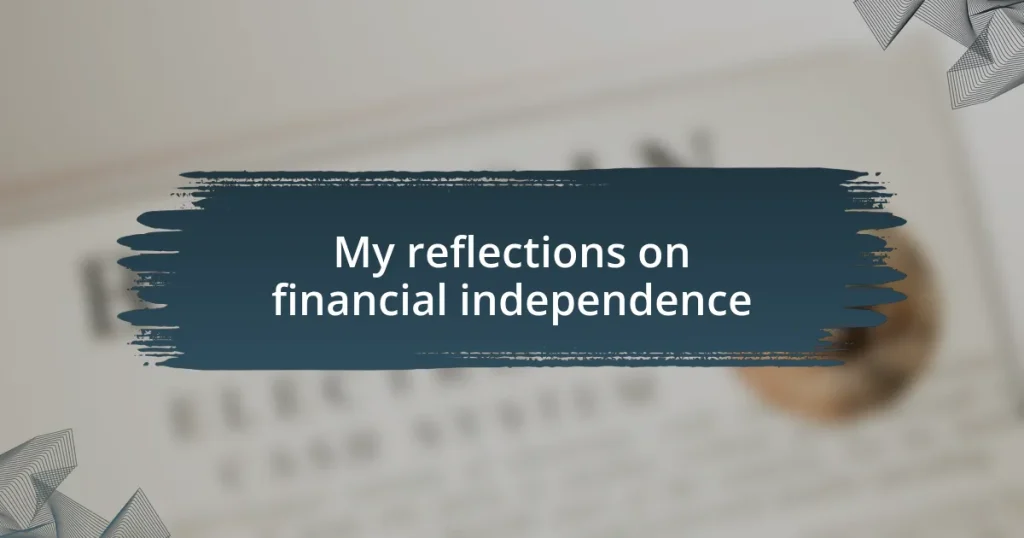Key takeaways:
- Financial independence is about making choices free from financial worries, emphasizing the balance between saving and enjoying life.
- Setting clear financial goals creates accountability and clarity, helping to transform how we interact with money.
- Achieving financial independence involves practical steps like budgeting, building an emergency fund, eliminating debt, and investing wisely.
- Flexibility in budgeting and diversifying income streams are essential for adapting to life’s changes and enhancing financial stability.
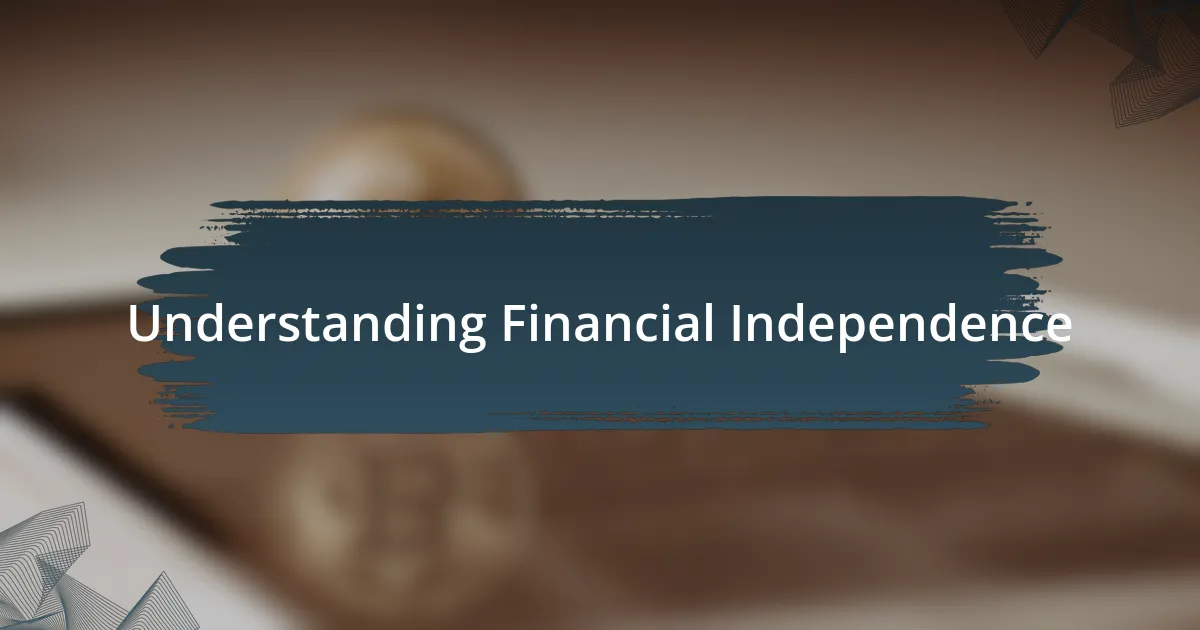
Understanding Financial Independence
Financial independence, to me, means having the freedom to make choices without being tied down by financial worries. I remember a time when I felt stressed every month just trying to cover my bills. That weight lifted when I created a plan to save and invest, which opened the door to a future where I could choose what to do with my time and resources.
When I think about financial independence, I can’t help but reflect on the balance between saving and enjoying life. I once held back on every little expense, thinking it would help me reach my goals faster, yet I found myself missing out on moments that mattered. Isn’t it interesting how a little spending on experiences can enrich our lives while still keeping us on a path to independence?
The journey to financial independence is not just about accumulating wealth; it’s about shaping your identity and values along the way. I found that every financial decision I made reflected my beliefs about what truly mattered to me. Have you considered how your values align with your financial choices? This consideration has profoundly changed my perspective on managing money, shifting it from a mere necessity to a tool for crafting the life I desire.
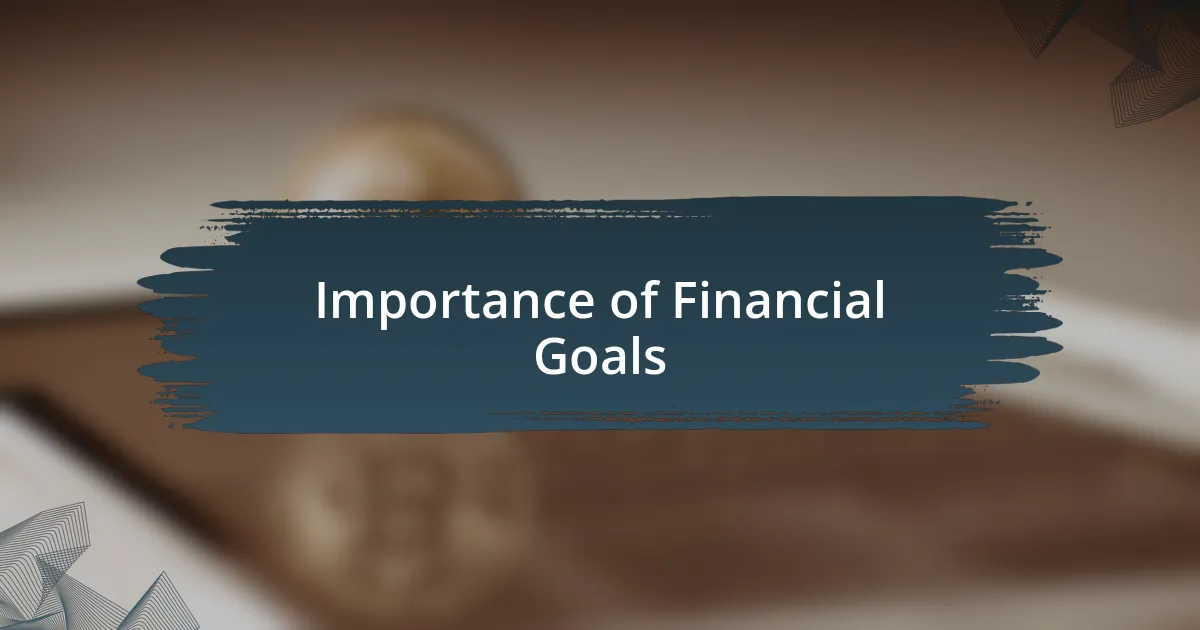
Importance of Financial Goals
Financial goals serve as the backbone of any financial plan, guiding us toward the independence we desire. I recall when I first set short-term savings goals for a vacation; it motivated me to put aside a portion of my income consistently. Tracking my progress not only built my savings but also fostered a sense of accomplishment that made each saved dollar feel rewarding.
Establishing clear financial goals can change the way we view and interact with money. Early on in my journey, I had a vague notion of what financial security looked like. But once I set specific targets, like saving for a home down payment, I developed a focused strategy that made my financial decisions clearer and more purposeful. It’s fascinating how clarity can transform your approach to managing expenses and investments.
Moreover, having financial goals creates accountability. I remember sharing my objectives with a close friend, which added a layer of commitment I hadn’t expected. This external accountability played a pivotal role in my discipline and helped me stay on track even when faced with distractions. It makes me wonder if we sometimes underestimate the power of sharing our goals to foster support and motivation.
| Main Focus | Specific Examples |
|---|---|
| Guidance | Short-term vs. Long-term Goals |
| Clarity | Understanding Financial Needs |
| Accountability | Sharing Goals with Others |
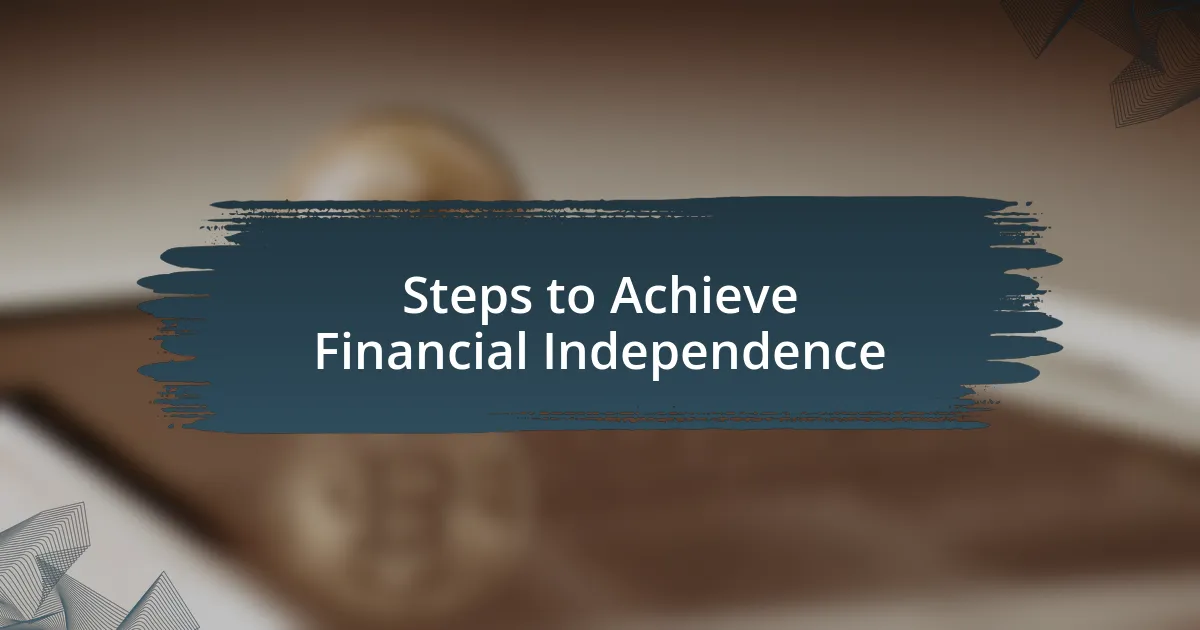
Steps to Achieve Financial Independence
Achieving financial independence is a journey that requires practical steps and personal commitment. I vividly remember the moment I decided to create a budget; it felt like a weight had been lifted. Shortly after tracking my income and expenses, I discovered areas where I could cut back. It was both empowering and eye-opening to see my spending patterns laid out in front of me.
Here are some essential steps to consider on your path to financial independence:
- Create a Budget: Break down your income and expenses to understand your financial flow.
- Build an Emergency Fund: Aim for three to six months’ worth of living expenses to secure yourself against unexpected events.
- Eliminate Debt: Focus on paying off high-interest debts first; it not only eases financial burden but boosts motivation.
- Invest Wisely: Research and select investment opportunities that align with your financial goals and risk tolerance.
- Diversify Income Streams: Consider side jobs or passive income options to enhance your earnings and build wealth.
I distinctly recall the liberating experience of finally paying off my student loans. The feeling of being debt-free added a spring to my step and renewed my determination to save for my future. Each of these steps contributes to a solid foundation, propelling you closer to the financial freedom you desire.
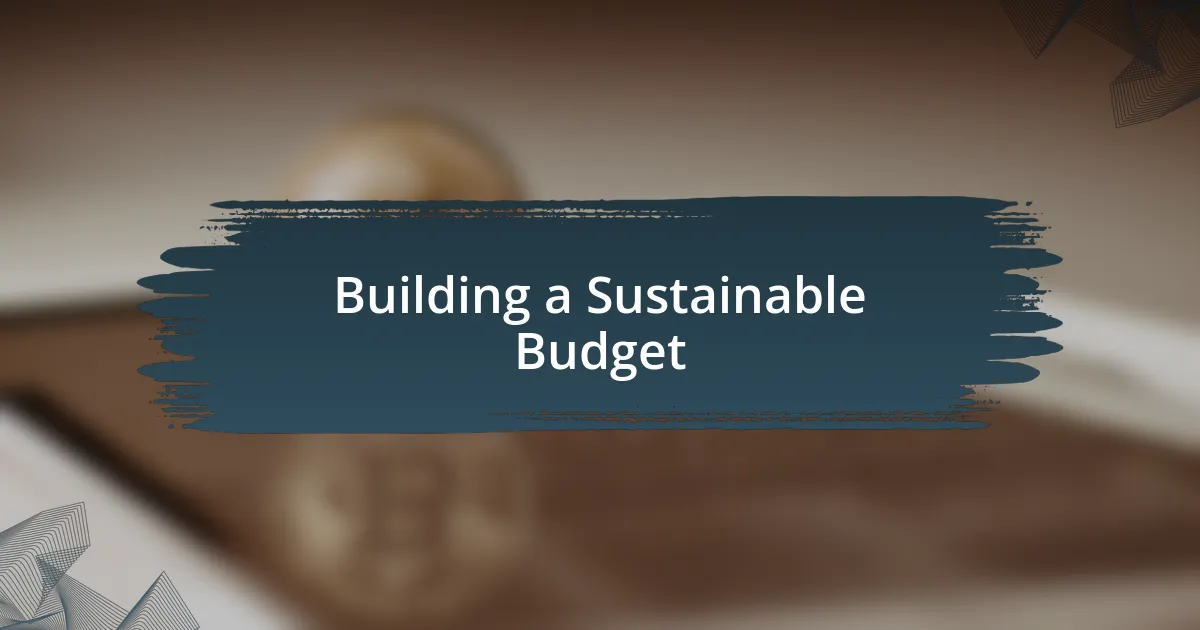
Building a Sustainable Budget
Building a sustainable budget starts with transparency about where your money is going. I still remember the eye-opening moment when I realized how much I was spending on dining out. It wasn’t just about the totals; it was about understanding my choices and how they aligned with my financial goals. Have you ever looked closely at your budget and felt shocked by your own spending habits?
Tracking my expenses became a transformative experience for me. I began to categorize every dollar, and it felt like piecing together a puzzle that revealed the bigger picture of my financial well-being. For instance, once I identified my discretionary expenses, I shifted some of those funds toward savings. It’s incredible how small adjustments can make a difference; even just cutting back on that daily coffee run can add up over time.
As I developed this habit, I learned the importance of flexibility within my budget. Life has a funny way of throwing curveballs, and my budget needed to reflect that reality. For example, when an unexpected car repair came up, I had to adjust my spending in other areas. This taught me that a sustainable budget isn’t just a strict set of rules but a living document that adapts with me. Have you allowed your budget to reflect the changes in your life? A flexible approach not only relieves stress but positions you better for future financial challenges.
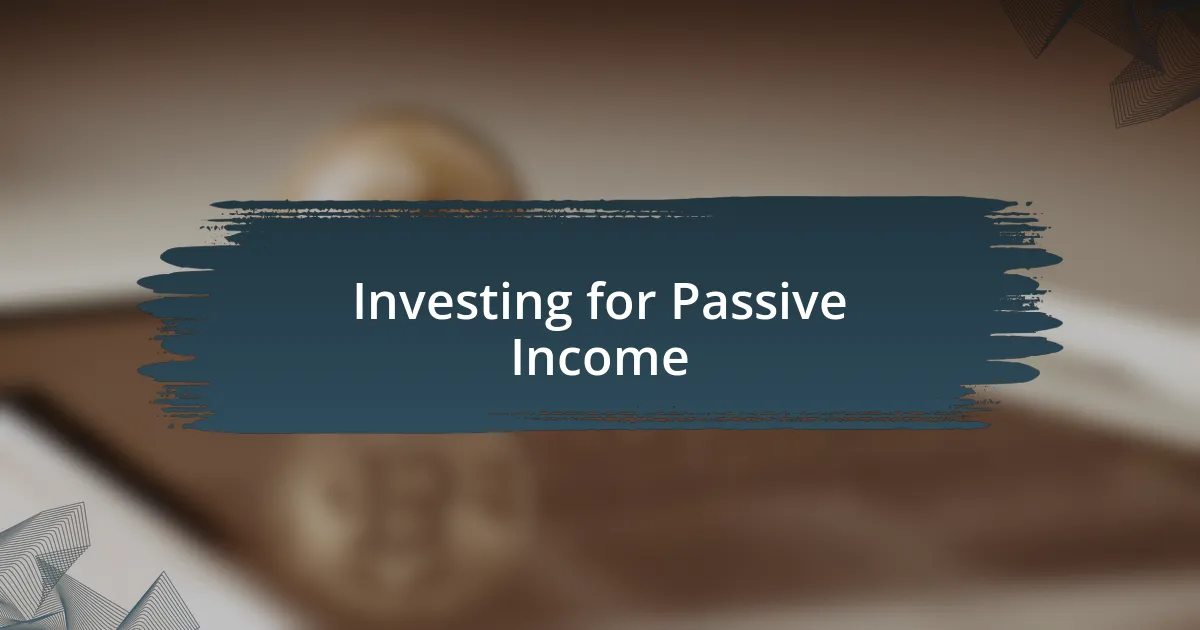
Investing for Passive Income
Investing for passive income has intrigued me for years. Unlike active income, which requires constant effort, passive income allows me to earn money while I sleep. For instance, when I first invested in dividend-paying stocks, I was pleasantly surprised to receive checks that felt almost like gifts. Have you ever thought about how liberating it can be to earn income without actively working for it?
Real estate has also played a significant role in my journey towards financial independence. I recall purchasing my first rental property with a mix of excitement and nerves. The initial repairs and tenant screenings were daunting, but watching the rental income roll in each month made it all worthwhile. It’s truly rewarding to see my investment contribute to my financial goals, but I often wonder—how many people limit themselves by overlooking real estate as an income source?
Additionally, peer-to-peer lending introduced me to another avenue for passive income. I was hesitant at first, unsure of how it would compare to traditional investments. Yet, after cautiously starting with small loans, I was amazed by the returns. Has this form of investing crossed your mind? It’s fascinating how diversifying income streams can enhance financial stability, providing a cushion against life’s uncertainties.
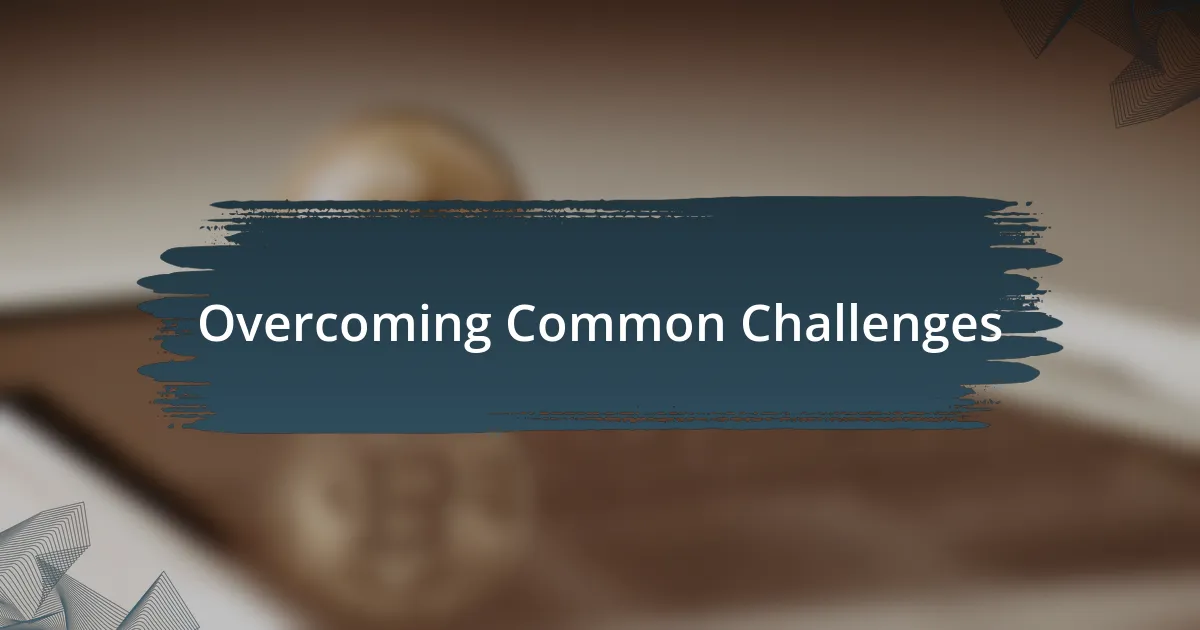
Overcoming Common Challenges
Overcoming challenges on the path to financial independence can be daunting, but I’ve learned that awareness is half the battle. When I faced unexpected expenses, I initially felt overwhelmed, thinking they might derail my progress. However, creating a solid emergency fund transformed my perspective, providing a safety net that allowed me to navigate financial hiccups with confidence. Have you ever faced a financial surprise that made you reconsider your plans?
Another significant hurdle for many, including myself, has been the fear of taking investment risks. I recall the first time I considered investing in stocks; the volatility was terrifying. But, I realized that educating myself about market trends and diversifying my portfolio could mitigate these fears. This shift in mindset turned investment decisions from a source of anxiety into opportunities for growth.
Time management has also been a challenge, especially balancing day-to-day obligations with my financial goals. I began prioritizing my tasks, dedicating specific hours each week to research and investment strategies. This approach not only helped me stay focused but also made the process enjoyable as I rediscovered my passion for finance. How do you manage your time when striving for financial independence? Finding that balance is crucial; it can turn your aspirations into achievable milestones.











